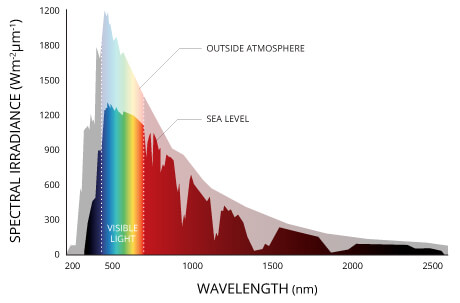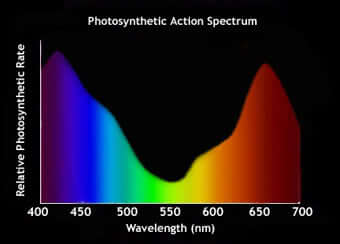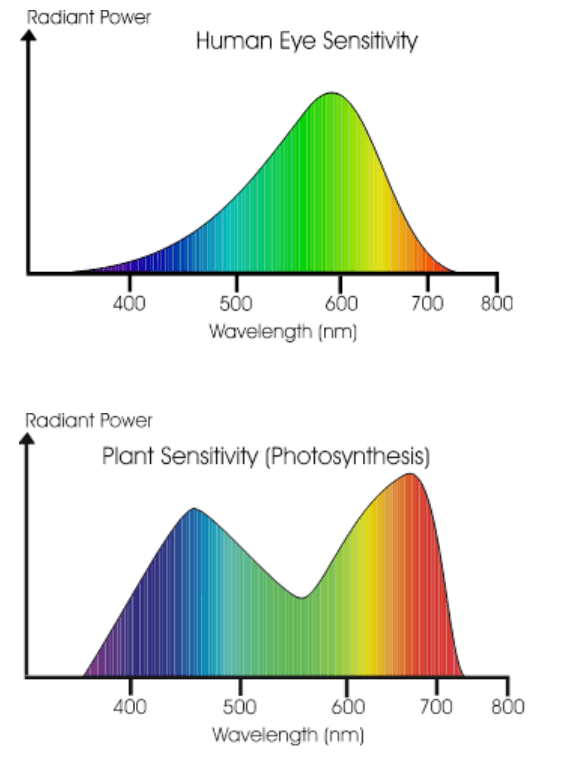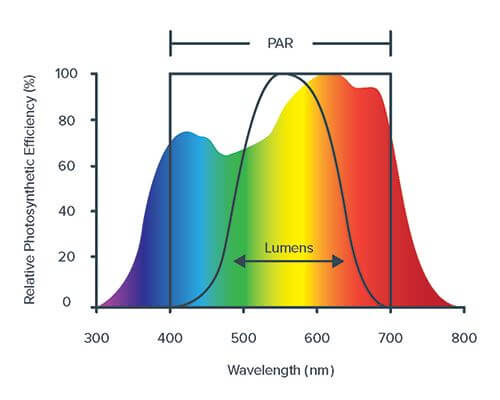What light requirements have plants?
Plants do not use all the sunlight that they receive, they only use part of the sunlight light spectrum.

This is the spectrum of the sunlight radiation. The rainbow painted area is what we know as visible light. Visible light coming from sun has something in common, irradiance is high, that means it’s a strong wave, it has a lot of force. To know about plant light spectrum requirements it’s important to know the which parts of the sunlight spectrum do plants need more.
Photosynthetically Active Radiation:
What are plants light requirements:
The next chart show only the visible light spectrum ( from 400 to 700nm ) on were the plants photosynthetic action, or light absorbtion, is more active. The center of the graph has very low values. That means that plants do not require much of the 500-600nm wavelenght, where greens lights are. Plants are not very sensitive to green light source, this is exactly where the human-eye response is higher.

Human-eye sensitivity VS Plant Photosynthetic Action Response
On this next graph it can be clearly seen. Human eye sensitivity is higher on the green range, exactly where plants photosynthetic action is less active. As a consequence, lighting indoor plants is a different thing than lighting indoor spaces for human eyes. And so, to satisfy plant light requirements well need to use light sources that take into account the plant active ranges, where the plant is more efficient on its photosynthesis process.

Light units of measure: Lumens
Intensity of artificial human light is mesured in Lumens. Lumens is a measure of unit for light intensity at the humane-eye sensitive range. A lot of Lumens means nothing for a plant, cause Lumens refer only to the more sensitive human-eye vision range.
Plants need light on the PAR range, from 400 to 700nm, which is wider than the human ones. PAR is not a unit, it only refer to the range useful for a plant photosynthesis.

This is the reason that grow light are different than conventional lights. Of course, not all the plants have the same photosynthetic response. For each species of plants the photosynthetic response is slightly different. For example: a Savanna tree lighting needs are different than a little orchid that lives under the canopy of a rainforest.


